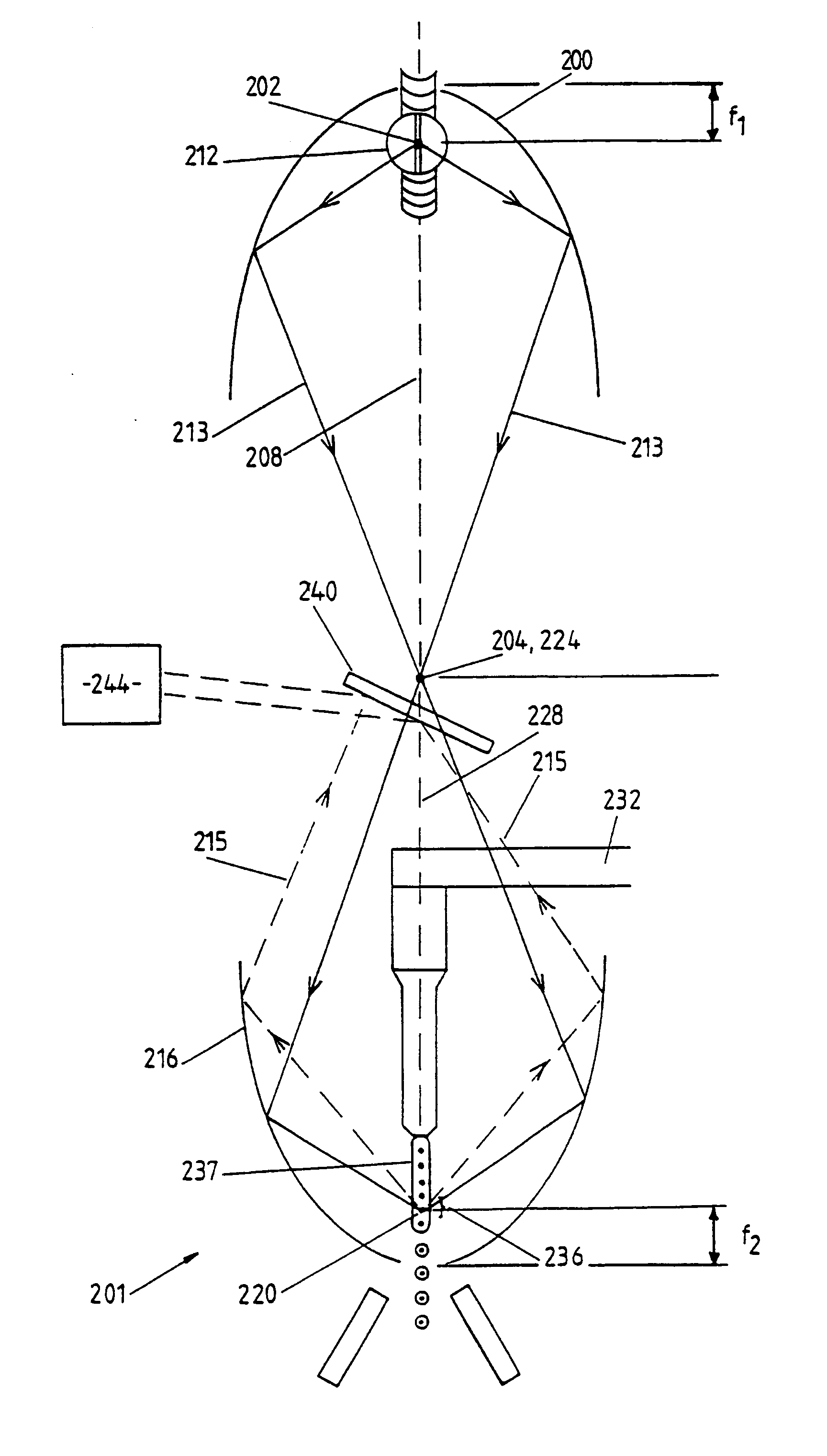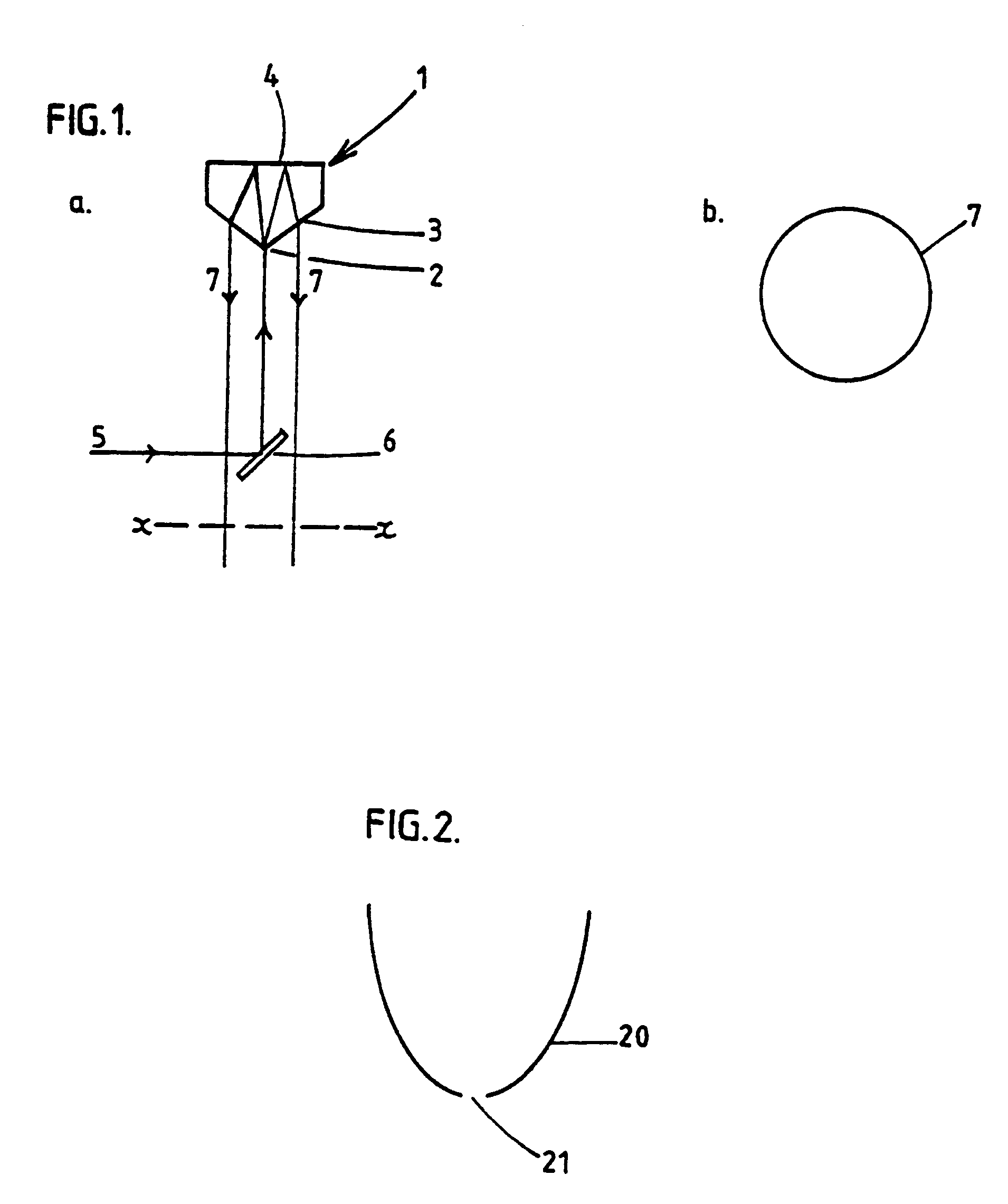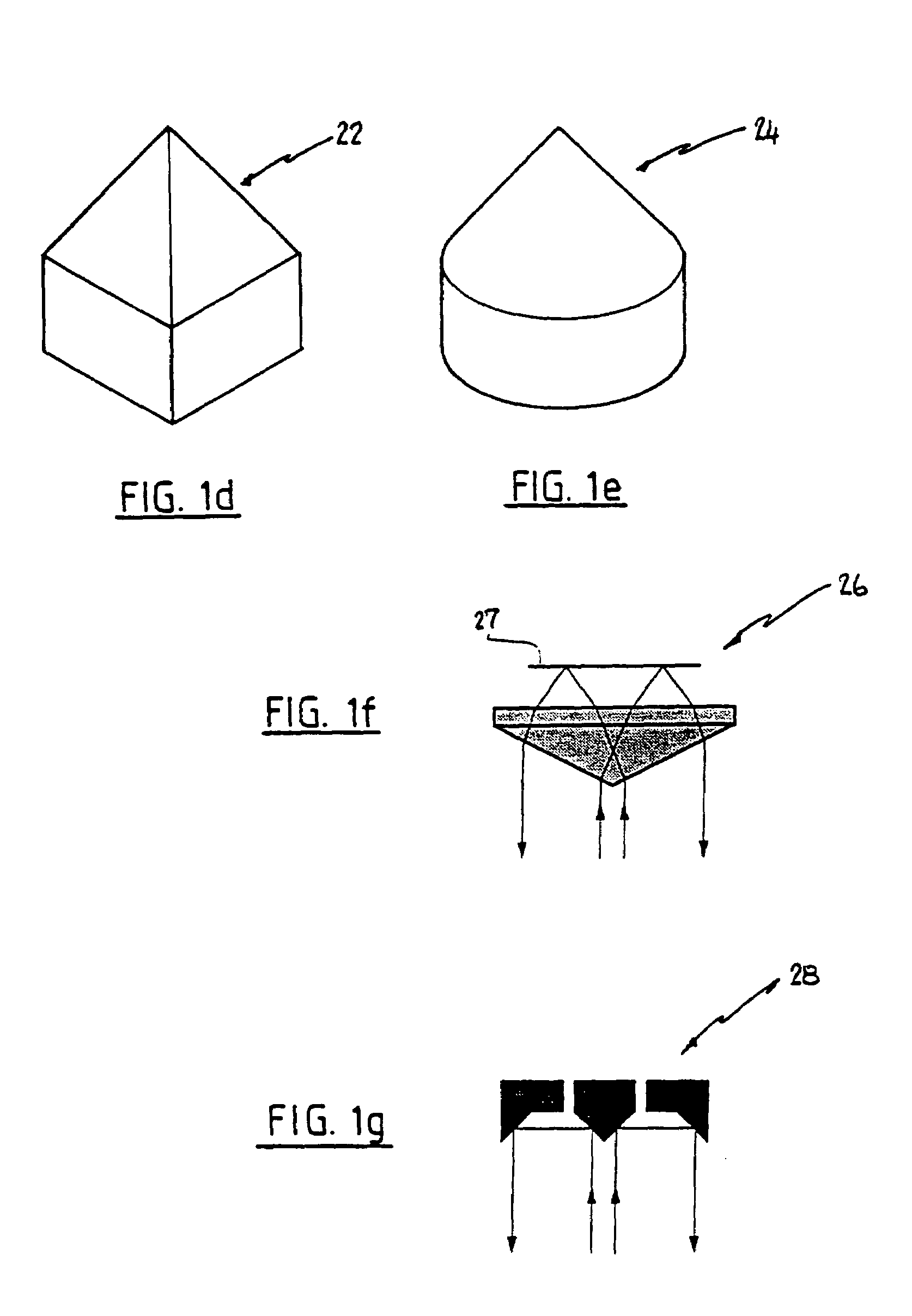Optical apparatus
a technology of optical apparatus and optical characteristics, applied in the field of optical apparatus, can solve the problems of difficult analysis of particle or object as a whole, difficulty in measuring optical characteristics of particles, and difficulties in flow cytometry, so as to increase the transmission efficiency of optical apparatus and reduce length
- Summary
- Abstract
- Description
- Claims
- Application Information
AI Technical Summary
Benefits of technology
Problems solved by technology
Method used
Image
Examples
Embodiment Construction
[0093]Some embodiments of the invention are discussed in “A New Optical Configuration for Flow Cytometric Sorting of Aspherical Cells”, Int. Soc. Optical Engr., Proc. Of Adv. Tech. Analytical Cytology, 1997, by John C. Sharpe, Peter N. Schaare and Rainer Kunnemeyer; “Radially Symmetric Excitation and Collection Optics for Flow Cytometric Sorting of Aspherical Cells”, Cytometry 29:363–370 (1997) by John C. Sharpe, Peter N. Schaare, and Rainer Kunnemeyer; and “A New Optical Configuration for Flow Cytometric Sorting of Bovine Spermatozoa by Sex”, a thesis submitted to the University of Waikato for the degree of Doctor of Philosophy in Physics by Johnathan Charles Sharpe, which are hereby incorporated by reference.
[0094]FIG. 1(a) illustrates an optical apparatus including a prism 1. The prism 1 has an apex 2 at a forward end of the prism, a right conical portion having a conical face 2, and a right cylindrical base portion contiguous with the conical portion. The base portion has a circ...
PUM
| Property | Measurement | Unit |
|---|---|---|
| angles | aaaaa | aaaaa |
| angles | aaaaa | aaaaa |
| angle | aaaaa | aaaaa |
Abstract
Description
Claims
Application Information
 Login to View More
Login to View More - R&D
- Intellectual Property
- Life Sciences
- Materials
- Tech Scout
- Unparalleled Data Quality
- Higher Quality Content
- 60% Fewer Hallucinations
Browse by: Latest US Patents, China's latest patents, Technical Efficacy Thesaurus, Application Domain, Technology Topic, Popular Technical Reports.
© 2025 PatSnap. All rights reserved.Legal|Privacy policy|Modern Slavery Act Transparency Statement|Sitemap|About US| Contact US: help@patsnap.com



